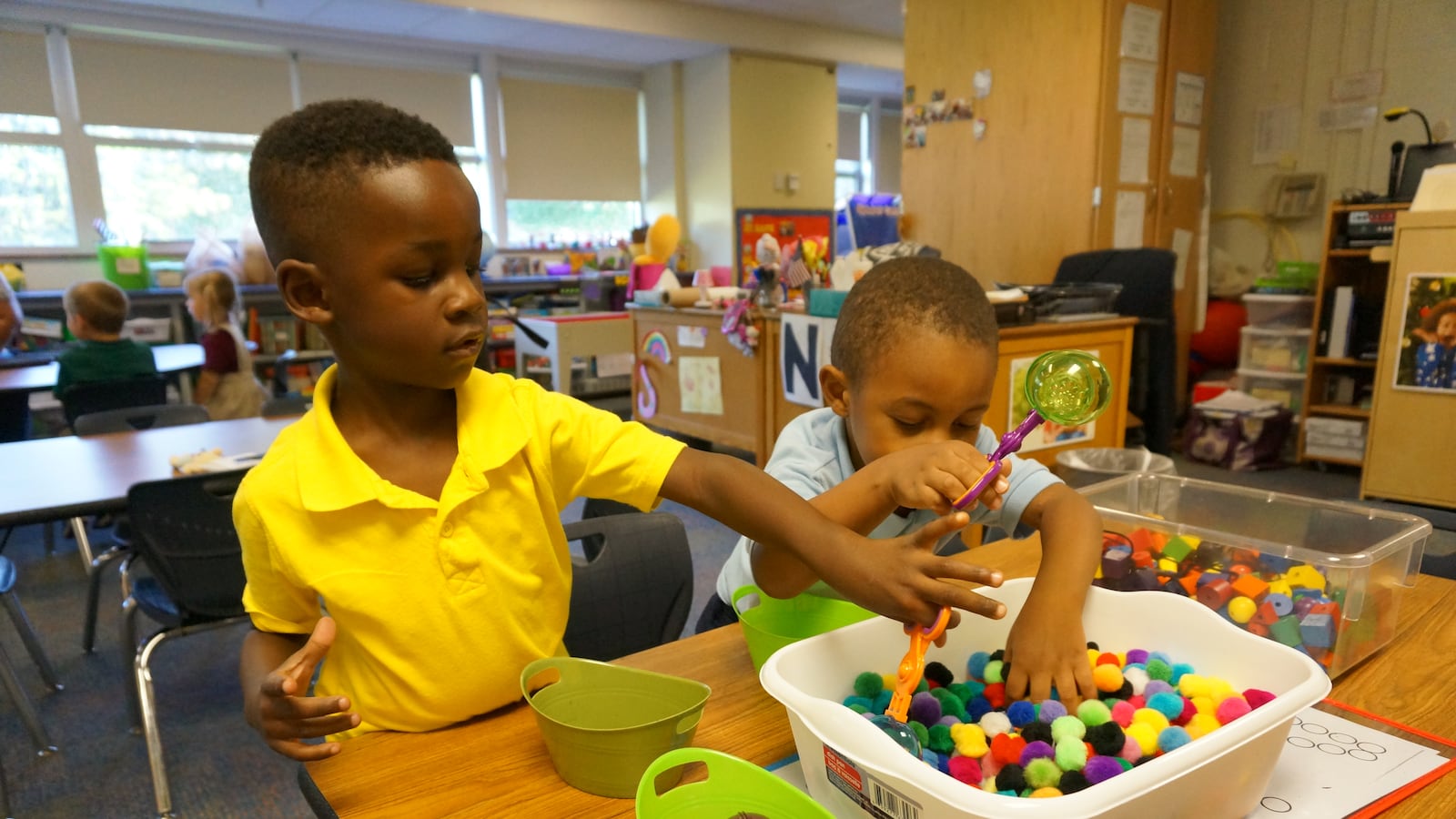It was four weeks into the year for preschoolers in Indianapolis Public Schools, but it was four-year old Taysia’s first day in the program at School 55.
At an illuminated table full of translucent blocks, she stood with three other children intently building towers. The kids played quietly until — “Hey, that was mine!” a boy suddenly exclaimed.
With most of the blocks in use, Taysia had taken one from her playmate.
Teacher Carol Eberhart quickly stepped in to navigate the dispute and urged Taysia to ask her friends for a turn with the blocks.
“Maybe let’s ask together,” she said.
It may have seemed like an ordinary classroom squabble but Eberhart was teaching some of the most important skills that children learn in preschool. As she worked with Taysia and the other kids, she wasn’t just making peace. She was teaching conflict resolution, patience and the skills kids need to communicate with their peers.
If she does her job well, Eberhart said most of her preschool students will finish the school year with more of the soft skills it takes to succeed in school, including social skills.
“Eventually there will be six kids in the kitchen, and … they can cooperate and work together and take turns,” she said. “Patience, working together, using your words — right now that’s what they are really working on.”
Preschool is a big political issue across the state, with Indiana lawmakers and education advocates jockeying over how much to expand the state’s preschool pilot during the next legislative session.
Meanwhile, the state’s largest school district has more than tripled the size of its preschool program in recent years. By 2015, enrollment in IPS preschool had climbed to more than 800 kids from about 237 students in 2012, according to district data.
The program expanded so quickly, the district has struggled with filling all of the available spots.
Nearly a month into the year, the free IPS program still has 240 empty seats in classrooms that have space for a total of 845 kids, according to IPS curriculum officer Tammy Bowman.
The availability exists even as other free preschool programs are at capacity. A state and city program that uses a lottery to give vouchers to families for public or private preschool programs had thousands more applicants than available vouchers last year.
With 15 students enrolled, Eberhart’s class at School 55 still had room for five more kids.
The program is free for any student who lives within the district boundaries. IPS spends about $4,586 per student and the money to pay for the program comes from federal funding for educating low-income students, Bowman said.
In a district that serves many students who are already behind national standards when they enter kindergarten, leaders say that preschool is an essential tool for helping kids catch up.
When the district compared kindergarteners who went to preschool to those who didn’t in 2014-2015, it found that kids who had been to preschool were far better prepared to learn to read. Nearly half of IPS kindergarteners who hadn’t attended preschool were behind grade level when it came to early literacy skills such as recognizing the initial sounds in words, knowing the alphabet and vocabulary, Bowman said. In contrast, 68 percent of kids who had been to preschool had mastered those literacy skills.
Preschool can also be a way for new parents to learn what school will be like, Bowman said.
“It helps get families ready,” she said. “(Preschool) helps provide them kind of that bridge to getting used to the school experience and working with schools.”


